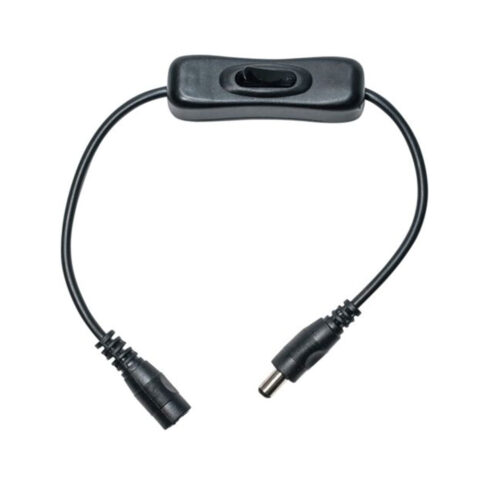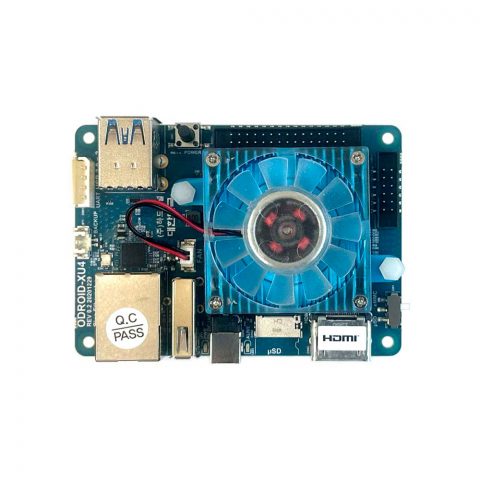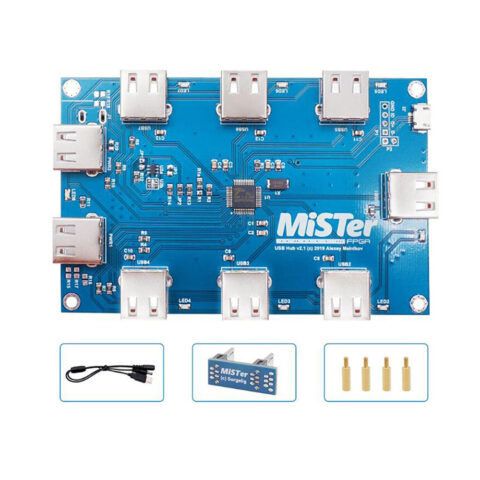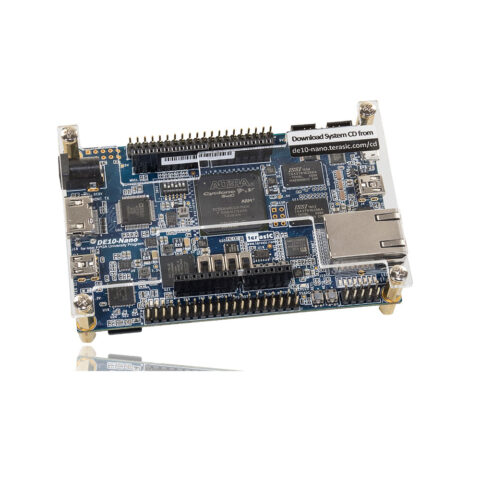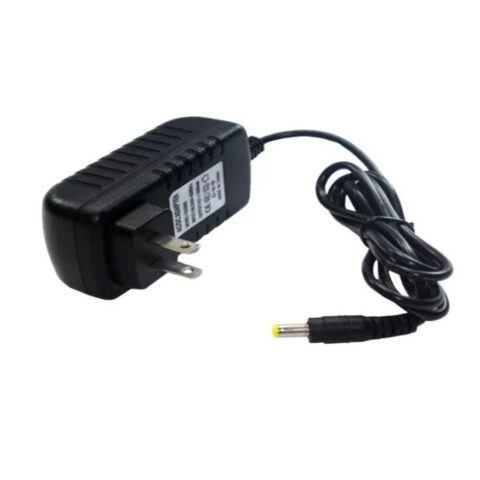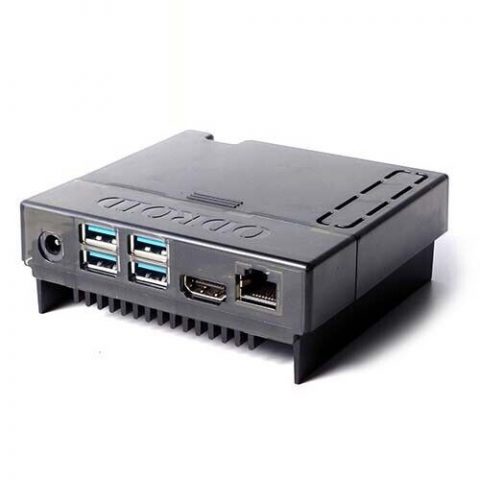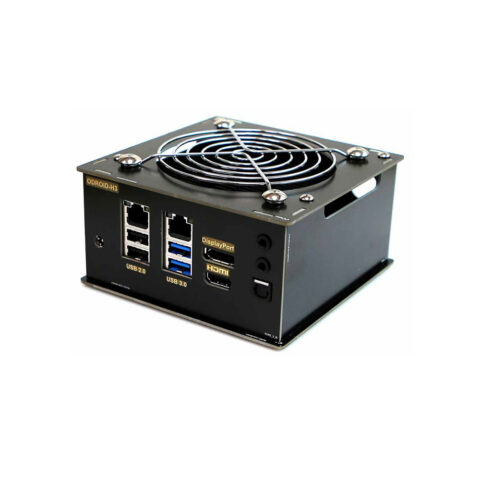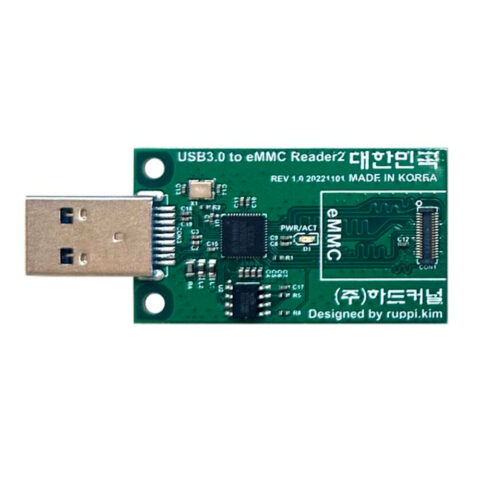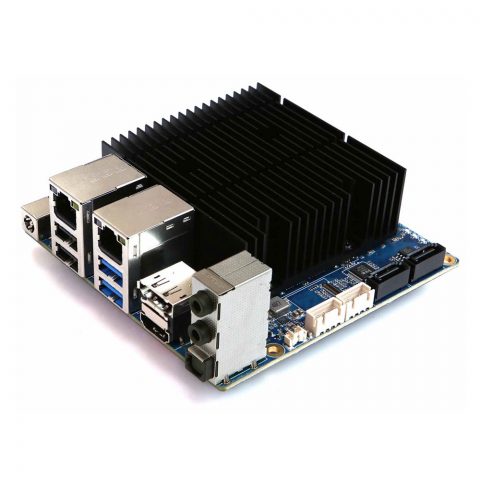The ODROID-M1 is a single board computer with a wide range of useful peripherals developed for use in a variety of embedded system applications.
The CPU has four ARM Cortex-A55 processors with low power consumption and high efficiency operation at 2Ghz. The CPU and GPU performance is quite similar to our ODROID-C4.
This is the larger 8GB of LPDDR4 DRAM Memory while there is also a 4GB model for reduced cost.
Petitboot pre-installed into the on-board 16MiB of SPI-Flash Memory helps manage various OS and kernel versions easily and supports booting from microSD, eMMC, NVMe, SATA, and USB storage devices. In addition, since on-line OS installation using a network is possible, the cumbersome procedure of downloading and flashing an OS image is dramatically reduced.
A standard size 22mm x 80mm M.2 NVMe storage device can be directly installed on the ODROID-M1 board. The M.2 connector has PCIe 3.0 2-lane configuration which can deliver a blazing fast 1600MB/sec of sequential access performance. Note that M.2 SATA storage devices can not be used. The M.2 slot supports only a PCIe interface (M-Key).
A single native (non-USB) SATA 3.0 port is provided for use with a 2.5inch HDD or SSD NAND Memory storage device. This SATA interface delivers near 500MB/s of sequential access. The SATA Mount and Cable Kit contains a SATA Data cable, a SATA Power cable, and a mount plate with some support screws. However, since the SATA power port doesn’t have a 12Volt power rail, a separated external 12Volt SATA power supply is required to use a 3.5inch HDD.
A sleek and cool blue M1 Metal Case Kit is an available option to protect your ODROID-M1 board. The metal cover is made with aluminum extrusion that has an abrasive blasted surface texture and anodized blue finish. It can be securely docked to the ODRID-M1 heatsink frame via sliding slot. The front and rear side covers were made with gold plated PCBs.
Power consumption and heat characteristics: Without any external peripherals connected, the M1 power consumption is about 4.5Watt with a very heavy computing load. It could be as low as 1.3Watt in the idle state.
Thanks to the huge heatsink frame, the thermal characteristics look quite good with very heavy CPU computing load. The CPU core temperature was near 50°C with a heavy computing load at a relatively high 35°C ambient temperature. This is very far from the thermal throttling trigger point, and the ODROID-M1 can run in various embedded application environments without noisy active cooling.
Analog audio output sound quality: There is a 3.5mm stereo headphone jack on the M1 board. It presents an on-board high quality 384Khz/32bit stereo audio output. Dynamic range and SNR is near 100dB and Total Harmonic Distortion + Noise is lower than 0.006%. You can enjoy Hi-Fi sound quality without an expensive external audio DAC. We have measured the sound quality with Audio-Precision equipment as usual.
LINKS
- Wiki Page: https://wiki.odroid.com/odroid-m1/odroid-m1
Software support
- Ubuntu 20.04 LTS & 22.04 LTS
- Kernel 4.19.219
- Wayland based GNOME desktop
- Mali GPU EGL driver on Wayland
- MIPI DSI and CSI drivers
- NPU drivers and Neural Network APIs
- GPIO drivers and WiringPi library
- Mainline kernel will be available several months later with Panfrost driver hopefully
- Android 11 Red Velvet Cake
- Kernel 4.19.193
- Dual head display feature : HDMI and MIPI-DSI at the same time
Specifications
| FORM FACTOR | Board Dimensions: 90mm x 122mm x 16mm Heatsink Dimensions: 100mm x 123mm x 19mm Weight: 253 g including heatsink |
|---|---|
| PROCESSOR | Rockchip RK3568 Processor L1 instruction cache: 32 KB, 4-way set associative (128 sets), 64 byte lines, shared by 1 processor L1 data cache: 32 KB, 4-way set associative (128 sets), 64 byte lines, shared by 1 processor L3 data cache: 512KB , 16-way set associative (512 sets), 64 byte lines, shared by 4 processorsQuad-Core Cortex-A55 (1.992GHz) ARMv8-A architecture with Neon and Crypto extensions Mali-G52 MP2 GPU with 4 x Execution Engines (650Mhz) |
| NPU | 0.8Tops@INT8, integrated high-performance AI accelerator RKNN NPU Supports one-click switching of Caffe/TensorFlow/TFLite/ONNX/PyTorch/Keras/Darknet |
| MEMORY | 4GB or 8GB LPDDR4 with 32-bit bus width Data rate: 3120 MT/s, up to 1,560MHz |
| STORAGE | 1 x eMMC slot 1 x Micro SD slot (DS/HS mode up to UHS-I SDR104) 1 x NVME M.2 SSD (PCIe 3.0 x 2) 1 x SATA3.0 |
| NETWORKING | 1 x GbE LAN ports (RJ45, supports 10/100/1000 Mbps) – Realtek RTL8211F (Ethernet transceiver) – LED indicators * Green LED: Flashing by data traffics at 100Mbps connection * Amber LED: Flashing by data traffics at 1000Mbps connection |
| VIDEO | 1 x HDMI 2.0 (up to 4K@60Hz with HDR, EDID) 1 x MIPI-DSI (works with 800 x 1280 LCD) |
| AUDIO | 1 x 3.5mm phone jack 1 x mono speaker output 1 x HDMI sound |
| EXTERNAL I/O | 2 x USB 2.0 host port 2 x USB 3.0 host port (or 1 x USB 3.0 host + 1 x USB 2.0 OTG port) 1 x Debug serial console (UART, 1.5Mbps N81) 1 x SATA Connector 1 x MIPI-CSI Camera Interface (15 pin) 1 x MIPI-DSI LCD Interface (31 pin) 1 x 40pin GPIO header |
| OTHER FEATURES | IR receiver for remote controller RTC and backup battery holder (to keep time and date for several months without main power input) System LED Indicators: – Red (POWER) – Solid light when DC power is connected – Blue (ALIVE) – Flashing “heartbeat” while Kernel is running. Solid On when in the u-boot stage. |
| POWER | 1 x DC jack : outer (negative) diameter 5.5mm, inner (positive) diameter 2.1mm DC input : 7.5V ~ 15.5V – DC 12V/2A power adapter is recommended – IDLE : ≃ 1.25W – CPU Stress : ≃ 4.44W (Performance governor) – Power Off : ≃ 0W |

